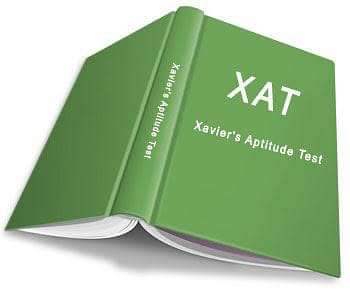
Xavier Aptitude Test (XAT) 2016 was conducted on January 3, 2016 from 10 am to 1:30 p. in about 50 cities across the country. XAT 2016 is the entrance exam primarily for XLRI Jamshedpur but its score is also accepted by over 140 B-schools across India. This year, Xavier Aptitude Test (XAT) had undergone several changes in terms of the exam pattern and marking scheme.
The test, which was divided into two parts, 78 questions in the first part and 25 questions plus an essay in the second. The first part had questions from three sections: Verbal and Logical Ability, Decision Making, and Quantitative Ability and Data Interpretation. The total time allotted for first section was 170 minutes. The second part consisted of General Awareness questions and a mandatory Essay Writing Section. The total time allotted to this section was 35 minutes.
http://xatonline.net.in/ had earlier revealed the total number of questions for its exam. However, despite reducing the number of questions from 84 to 78 this year the duration was increased by 20 minutes to 170 minutes for the first paper. The marking scheme for 2016 XAT has also undergone change with introduction of negative marking scheme for un-attempted questions as well. Beyond 13 un-attempted questions, each un-attempted question will invite a negative marking of 0.05 marks.
XAT 2016 Pattern:
The exam pattern of XAT 2016 was as below:
|
|---|
While announcing pattern changes in XAT 2016, it was indicated that difficulty level of question paper would be moderate. we were expecting an easy paper this year. However, both students and experts felt the difficulty level was of moderate to high. XAT had introduced negative marking for not attempting the questions to encourage students to attempt as amny questions as possible. But in reality, majority of the test takers felt it had no significant impact in their test taking strategy as the penalty was only .05 for one un-attempted question.
Section A – Verbal and Logical Ability
The XAT Verbal and Logical Ability section was tough as usual- some felt it was even tougher this year than normal. There were a total of 26 questions in this section: 12 Verbal Ability/Reasoning questions and 14 Reading Comprehension questions. The number of questions in RC were fewer than last year, but the overall difficulty was slightly higher. The exact question distribution was as follows:
| ||||||||||||||||||||||||||||||||||||||||||||||||||||||||||||||||||||
|---|---|---|---|---|---|---|---|---|---|---|---|---|---|---|---|---|---|---|---|---|---|---|---|---|---|---|---|---|---|---|---|---|---|---|---|---|---|---|---|---|---|---|---|---|---|---|---|---|---|---|---|---|---|---|---|---|---|---|---|---|---|---|---|---|---|---|---|---|
A reasonably prepare student should have been able to attempt 18 of the questions in this section (with about 80% accuracy) in about 45-50 minutes.
Section B – Decision Making
|
|---|
Questions in this section were easy to read and short, and most of the questions were of medium level of difficulty. There were two sets in the mathematical part of the section (one set with 3 questions and the other with 2 questions) and were of moderate level of difficulty.
Students should be able to solve about 5-6 sets and attempted 14-15 questions comfortably (with about 80% accuracy), out of the 23 questions in 40-45 minutes.
Section C – Quantitative Ability
The Quantitative Ability and Data Interpretation section was apparently easier than that in XAT-2015 paper. Majority of the Questions on Quantitative Ability were from Geometry and Arithmetic. At least two questions on Arithmetic also combined the concepts of Geometry. There were four questions on Numbers, out of which one question was incorrect. Further, there were three questions on Modern Mathematics. There was no question on Logarithms, Permutation-Combination or Probability. One question was on Logical Data Sufficiency.
There were two Data Interpretation sets, one with 4 questions and the other with 3 questions. The set with 4 questions on salaries involved a complex combination of a box plot and line graph with medium to difficult questions. The other set with 3 questions on crops had a table and was characterized by Easy to Medium level of difficulty questions. The set on table should have been attempted while the set on box plot should have been attempted at the end.
Overall, the level of difficulty of the section was slightly lower as compared to XAT-2015. In 60 minutes, about 17-19 attempts with 80% accuracy will be considered good.
| ||||||||||||||||||||||||||||||||||||||||||||||||||||||
|---|---|---|---|---|---|---|---|---|---|---|---|---|---|---|---|---|---|---|---|---|---|---|---|---|---|---|---|---|---|---|---|---|---|---|---|---|---|---|---|---|---|---|---|---|---|---|---|---|---|---|---|---|---|---|
General Knowledge
The section had 25 GK questions and the questions were almost equally distributed between current and static questions and further between national and international news based questions. The section was difficult as usual. This section required the student to possess reasonable good general knowledge ability in multiple areas. Moreover, the topics of the questions were very diverse ranging from areas such as Geography, Business and Economy, the budget, to areas such as names of personalities, politics and new inventions. There was no negative marking and most of the students attempted all questions were to be. The score in this sections will not to be taken into account for Cut offs. A score of around10 would be considered a good score in this section.
XAT-2016 Essay Section
Like every year, XAT came with a very interesting topic which required students to ponder and bring out various perspectives of their though process. The topic of the essay was “Technology and Nature are natural enemies”. Compared to previous year this topic was easy as in past years XAT had a tendency to give topics that were either abstract or philosophical
XAT-2016 Cutoffs Analysis
There is Section wise and overall cut offs for XLRI-BM, XLRI-HRM and some other B-schools that take XAT scores for a GD-PI call.
The Cut off may be as follows:
| ||||||||||||||||||||||||||||||||||||||||
|---|---|---|---|---|---|---|---|---|---|---|---|---|---|---|---|---|---|---|---|---|---|---|---|---|---|---|---|---|---|---|---|---|---|---|---|---|---|---|---|---|
Cut off score for some other institutes could be as below:
SP Jain | GIM | IMT | Great Lakes |
|---|---|---|---|
26-28 | 29-31 | 26-28 | 29-31 |
**The Cut off scores are only indicative of the trend. It may vary depending on various other factors.
Are you feeling lost and unsure about what career path to take after completing 12th standard?
Say goodbye to confusion and hello to a bright future!

Was this article helpful?



















Similar Articles
MAH MBA CET Cutoff 2026 for JBIMS: Check Category-wise Expected and Previous Year Cutoff
Mistakes to Avoid on SNAP 2025 Exam Day
SNAP 2025 Last Minute Tips - Check What to Do in Last Few Days of SNAP Preparation
SNAP 2025 Exam Day Guidelines: Documents to Carry, Instructions, Things to Avoid
How to Approach SNAP 2025 Question Paper: Smart Strategies for Your Question Paper Approach
CMAT 2026 Preparation Tips for General Awareness (GK): Important Topics, Sample Questions